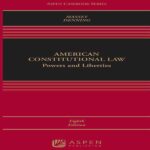- عنوان کتاب: The Wild Fractal Nature of Spacetime -Smooth Quantum Gravity and Cosmology
- نویسنده: World Scientific Publishing Co
- حوزه: گرانش کوانتومی
- سال انتشار: 2025
- تعداد صفحه: 432
- زبان اصلی: انگلیسی
- نوع فایل: pdf
- حجم فایل: 9.64 مگابایت
از شما بابت انتخاب این کتاب، سومین کتاب من، متشکرم. دلیل شما برای این کار هر چه که باشد، میخواهم مقدمهای و مروری بر این تکنگاری به شما ارائه دهم: در بهار ۱۹۹۱، در ترم دوم دانشگاه هومبولت برلین، فیزیک خواندم. در این مدت، در اولین سخنرانیام در مورد توپولوژی شرکت کردم. این سخنرانی به طور ویژه برای دانشجویان فیزیک مفهومسازی شده بود و انگیزه استفاده از توپولوژی در فیزیک را ایجاد کرد. اینجا بود که برای اولین بار در مورد ساختارهای دیفرانسیلی و نقش ویژه آنها در رابطه با منیفولدهای ۴ بعدی آموختم: در هر بعد دیگر، حداکثر تعداد محدودی از ساختارهای دیفرانسیلی متغیر وجود دارد، به جز فضاهای ۴ بعدی، که در آنها تعداد نامتناهی ساختارهای دیفرانسیلی ممکن است! حتی سادهترین فضا (همان R4 قدیمی خوب) ساختارهای دیفرانسیلی نامتناهی و بینهایت متفاوتی را در خود جای داده است. درک این موضوع که این امر باعث میشود بعد چهارم از همه ابعاد دیگر برتر باشد، در آن لحظه مرا تحت تأثیر قرار داد. و من مصمم شدم که این نظریه را مطالعه و درک کنم! متأسفانه، اصطلاح رایج «همواری نامتعارف» به شکلی ضعیف انتخاب شده است و نشان میدهد که ساختارهای دیفرانسیلی نامتعارف چیزی خاص و بیاهمیت هستند. اما کاملاً برعکس، ساختار دیفرانسیلی نزدیکترین تعمیم ممکن به هندسه است، به سبک انیشتین، که به دنبال تعمیمهای دقیقی مانند اینها بود. در آن زمان، مفهوم زیر در ذهنم شروع به شکلگیری کرد: با یک ساختار دیفرانسیلی ثابت شروع کنید، معادله انیشتین بدون منبع را در نظر بگیرید و ساختار دیفرانسیلی را تغییر دهید. سپس، باید یک عبارت منبع در معادله انیشتین یا ماده وجود داشته باشد، زیرا منبع میدان گرانشی نتیجه ساختار دیفرانسیلی است. این فکر به نوعی موضوع تکراری برای کارهای بعدی من تبدیل شد، حتی اگر احساس میکردم پیادهسازی مسائل ریاضی مرتبط تقریباً غیرقابل حل است. نزدیک به پایان سال ۱۹۹۲، اولین اثر کارل اچ. برانس و دوان رندال در مورد اثرات فیزیکی ساختارهای دیفرانسیلی منتشر شد. من از کار او بسیار الهام گرفتم. سرانجام، از طریق مسیرهای انحرافی، شخصاً در سپتامبر ۱۹۹۵ با کارل ملاقات کردم و ما شروع به همکاری کردیم. رویایی برای من به حقیقت پیوست، زیرا از ۱۲ سالگی که پشت پرده آهنین زندگی میکردم و نیمی از اروپا را از بقیه جهان جدا میکرد، میخواستم کارل را ملاقات کنم. در آن زمان، حتی فکر کردن به سفر به طور جدی غیرممکن بود، چه برسد به رفتن به آمریکا. من در کتابم «در مرز فضازمان» (صفحه xxiv) به طور مفصل در مورد این موضوع صحبت کردهام. در سال ۱۹۹۸، به دعوت کارل، با هواپیما به نیواورلئان رفتم و با هم ایده پروژه کتابنویسیمان با عنوان «هموارسازی و فیزیک عجیب و غریب» را توسعه دادیم. تنها نه سال بعد، در سال ۲۰۰۷، این کار انجام شد: اولین مقدمه در نظریه ساختارهای دیفرانسیل. از طریق کار بر روی این پروژه، مسیر تحقیقاتی من تغییر کرد. متوجه شدم که تغییر در ساختارهای دیفرانسیلی غیرضروری است و به یک منیفولد ۵ بعدی (یک کوبوردیسم بین هر دو منیفولد ۴ بعدی) نیاز دارد. بارها از خودم پرسیدم: مرزهای توپولوژیکی مشابه (یعنی منیفولد ۳ بعدی) یک منیفولد ۴ بعدی با ساختار دیفرانسیلی متغیر چگونه با یکدیگر متفاوت هستند؟ منیفولدهای ۳ بعدی از طریق یک ساختار دیفرانسیلی منحصر به فرد مشخص میشوند. اما باید تفاوتی وجود داشته باشد. در رابطه با این مشکل، این ایده به ذهنم رسید که این تفاوت دقیقاً همان چیزی است که نظریهی برگوارگی برای سه منیفولد توصیف میکند. خیلی زود برایم روشن شد که این برگوارگیها (با کمک هندسهی ناجابهجایی) پلی مهم به فیزیک کوانتومی هستند. هدف این کتاب توصیف مسیر ساختارهای دیفرانسیلی به برگوارگیهای فضازمان و توصیف ساختارهای دیفرانسیلی نامتعارف به عنوان دنبالهای از تغییرات توپولوژیکی فضا است. نتیجهگیری اصلی کتاب را میتوان به صورت زیر خلاصه کرد: تغییر در ساختارهای دیفرانسیلی به یک ساختار دیفرانسیلی نامتعارف را میتوان به عنوان یک کوانتیزاسیون درک کرد. در این حالت، حالتهای کوانتومی سه منیفولدهای وحشی و جاسازیشده هستند. اما این نظریه چگونه خود را در وضعیت فعلی تحقیق، در بافت خود قرار میدهد؟
Thank you for picking up this, my third, book. Whatever may be your reasons for doing so, I would like to give you an introduction and overview of this monograph: In the spring of 1991, I studied physics in my second semester at Humboldt University of Berlin. During this time, I attended my first lecture on topology. The lecture was especially conceptualized for physics students and motivated the usage of topology in physics. This is where I, for the first time, learned of differential structures and their special role in relation to 4-dimensional manifolds: In every other dimension there are at most a finite number of varying differential structures, except for 4-dimensional spaces, where an infinite amount of differential structures are possible! Even the simplest space (the good old R4) carries uncountable infinitely different differential structures. The realization that this makes the fourth dimension superior to all other dimensions hit me in that moment. And I was determined to study and understand this theory! Regrettably, the common term Exotic Smoothness is chosen poorly in a way and suggests that the exotic differential structures are something particular and unimportant. But quite the contrary, the differential structure is the closest possible generalization of geometry, in the spirit of Einstein, who searched for exact generalization like those. Back then, the following concept started forming in my head: start with a fixed differential structure, consider the source-free Einstein equation and change the differential structure. Then, there should occur a source term in the Einstein equation or matter as source of the gravitational field is a result of the differential structure. This thought turned out to be some sort of leitmotif for my further work, even though I felt like the implementation of the associated mathematical problems were nearly insurmountable. Near the end of 1992, the first work by Carl H. Brans and Duane Randall on physical effects of differential structures was being published. I felt immensely inspired by his work. Finally, via detours, I would meet Carl personally in September 1995 and we started working together. A dream came true for me, as I had wanted to meet Carl since I was 12 years old, living behind the Iron Curtain, that separated half of Europe from the rest of the world. Back then, it would have been impossible to even seriously consider traveling, let alone go to America. I have talked about this in depth in my book “At the Frontier of Spacetime” (page xxiv). In 1998, following Carl’s invitation, I took a plane to New Orleans and together we developed the idea to our book writing project Exotic Smoothness and Physics. Only nine years later, in 2007, it was done: the first introduction into the theory of differential structures. Through working on this project, my line of research changed. I realized that a change in differential structures is unnecessary and needs a 5-dimensional manifold (a cobordism between both 4-dimensional manifolds). I repeatedly asked myself: How do the topologically similar boundaries (i.e. 3-dimensional manifold) of a 4-dimensional manifold with varying differential structure differ from each other? The 3-dimensional manifolds are characterized through a unique differential structure. But there must be a difference. In regard of this problem, I got the idea, that this difference is exactly what the theory of foliation for three-manifolds describes. It quickly became clear to me that these foliations (with the help of noncommutative geometry) represent an important bridge to quantum physics. This book aims to describe the path of differential structures to foliations of Spacetime and the depiction of exotic differential structures as sequence of topological changes of the space. The main conclusion of the book can be summarized as the following: a change in differential structures to an exotic differential structure can be understood as a quantization. Whereby the quantum states are wild, embedded three-manifolds. But how does the theory contextualizes itself in the current state of research?
این کتاب را میتوانید از لینک زیر بصورت رایگان دانلود کنید:
Download: The Wild Fractal Nature of Spacetime



































نظرات کاربران